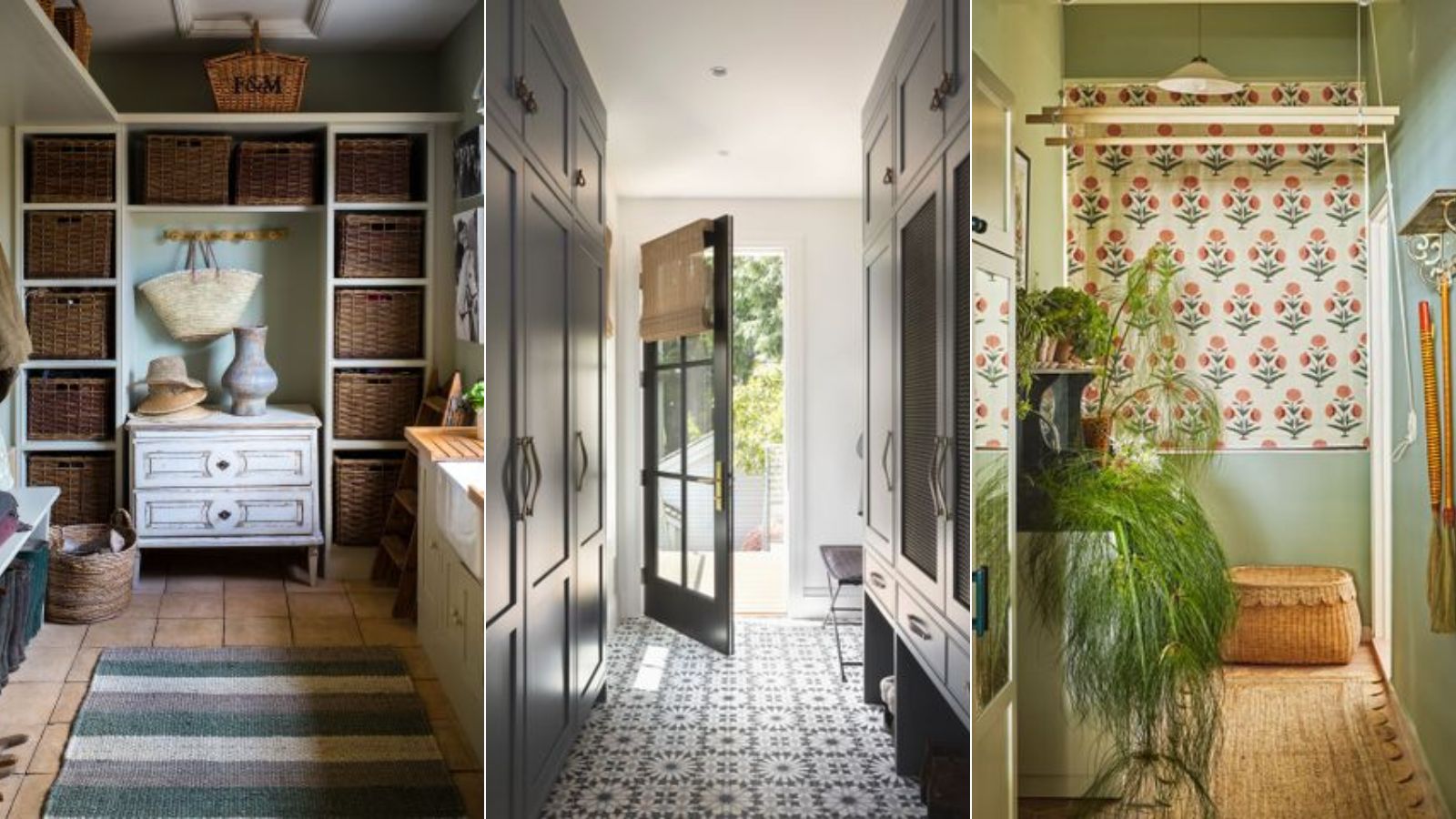
Your mudroom is instrumental in keeping mess out your house and although not a room you will likely spend much time in, you will be in and out of it quite regularly, and so, naturally, you will want it to smell nice.
Mudrooms house your damp coats, shoes, mucky pet kit, and other messier out-to-indoor items, so of course keeping yours smelling nice will be a challenge. But, since your mudroom might be the first room visitors enter when going into your house, its unwelcome aromas may have you looking for ways to make your home smell nice and more inviting, fast.
Mudrooms that smell good are achievable, if you follow our experts' cleaning tips, drying techniques, and introduce a signature scent. Here's how.
How to make a mudroom smell nice
Sadly, there's no magic formula to make mudrooms smell better: it's all about maintenance and cleaning routines, and getting the rest of the household to buy in.
1. Keep on top of mess and dirt
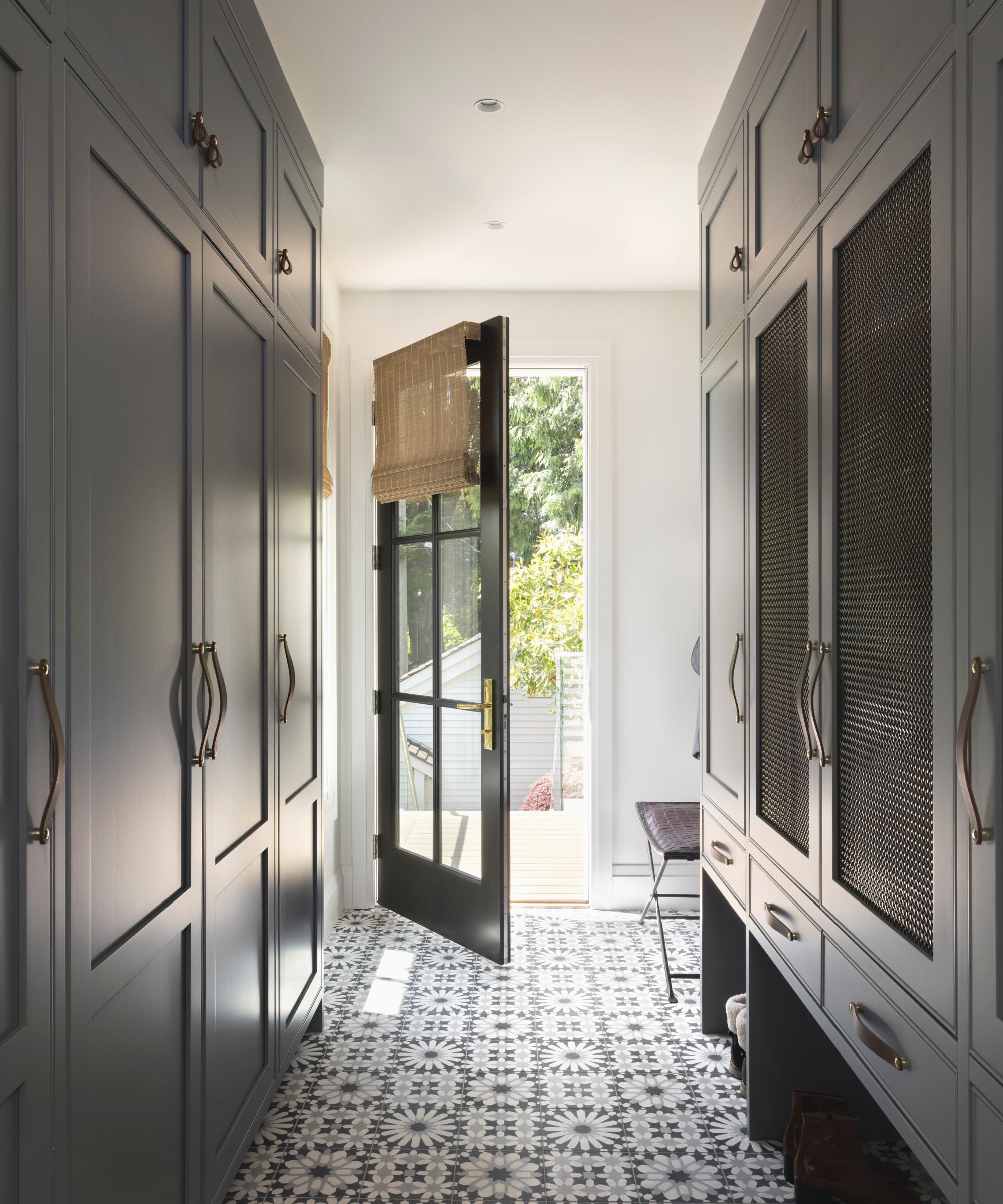
'Those with well-scented mud rooms understand its purpose – it's the threshold space between the outside world and your cozy interiors. Their design will often strike a balance between functionality and aesthetics, creating a welcoming space while preventing dirt and clutter from entering the main house', says Artem Kropovinsky Principal Interior Designer and Founder at Arsight.
Having a regular routine of cleaning your mudroom should keep odors at bay. To save time, start by identifying the key points that can contribute to bad smells, such as dirty rugs, muddy shoes on the floor, pet food left out, and make sure to regularly clear and clean these areas.
James King at DeluxeMaid suggests, 'Have alcohol and sanitizing wipes ready at the entrance to maintain cleanliness. Lay down rugged rugs for wiping shoes and messes, and keep a bucket for wet umbrellas handy. Thoroughly vacuum the entryway and hallway, then use a damp microfiber mop [Ed: this microfiber spray mop at Amazon is our favorite] to pick up any leftover dust and grime. Clean your entryways every weekend by sprinkling baking soda in the closet, wiping down doors and windows, and dusting walls.'
Try to use natural non-toxic cleaners that don't leave behind their own unpleasant smells or residue. Baking soda is a great odor-absorbing solution and activated charcoal can be used to neutralize bad smells.
Karina Toner, Operations Manager at Spekless Cleaning says 'Make sure not to overlook deep cleaning sessions and seasonal maintenance tasks, such as washing rugs, general decluttering, and cleaning storage areas. Apart from cleaning maintenance, we all know that different seasons bring varying weather conditions and requirements. Seasonal maintenance allows you to prepare the mudroom for the upcoming season, ensuring it's ready to handle the challenges posed by weather changes.'
2. Manage coat and shoe odors
The main culprits of bad smells in mudrooms are damp coats and shoes. If coats and clothes aren't hung up to dry properly, they may start to smell damp and make the whole room smell this way too, and if shoes aren't left to air out after being worn, the odors can get trapped and the shoes will begin to smell.
To prevent this, coats and shoes should be left to air out before they are put away. This is why it can be a good idea to have a coat rack that is solely for drying and airing coats.
For shoes, you can use open shoe racks and baskets to store regularly worn shoes, and keep lesser used, dry ones in closets or drawers. You can also find boot trays, such as this highly-rated buy from Amazon, which are designed to trap water and mud for snowy boots to prevent the dirty water spreading. Keep these near the door or dehumidifier where it will get the most ventilation.
Karina Toner recommends, 'Shoes and other outdoor gear can bring in dirt and odors, so consider implementing a shoe-cleaning routine. This could involve using doormats both inside and outside the mudroom, wiping shoes before entering the house, and storing them properly. Some people with mudrooms also adopt a no-shoes policy inside the house to minimize the transfer of dirt and outdoor odors to other parts of the home.'
3. Invest in storage solutions
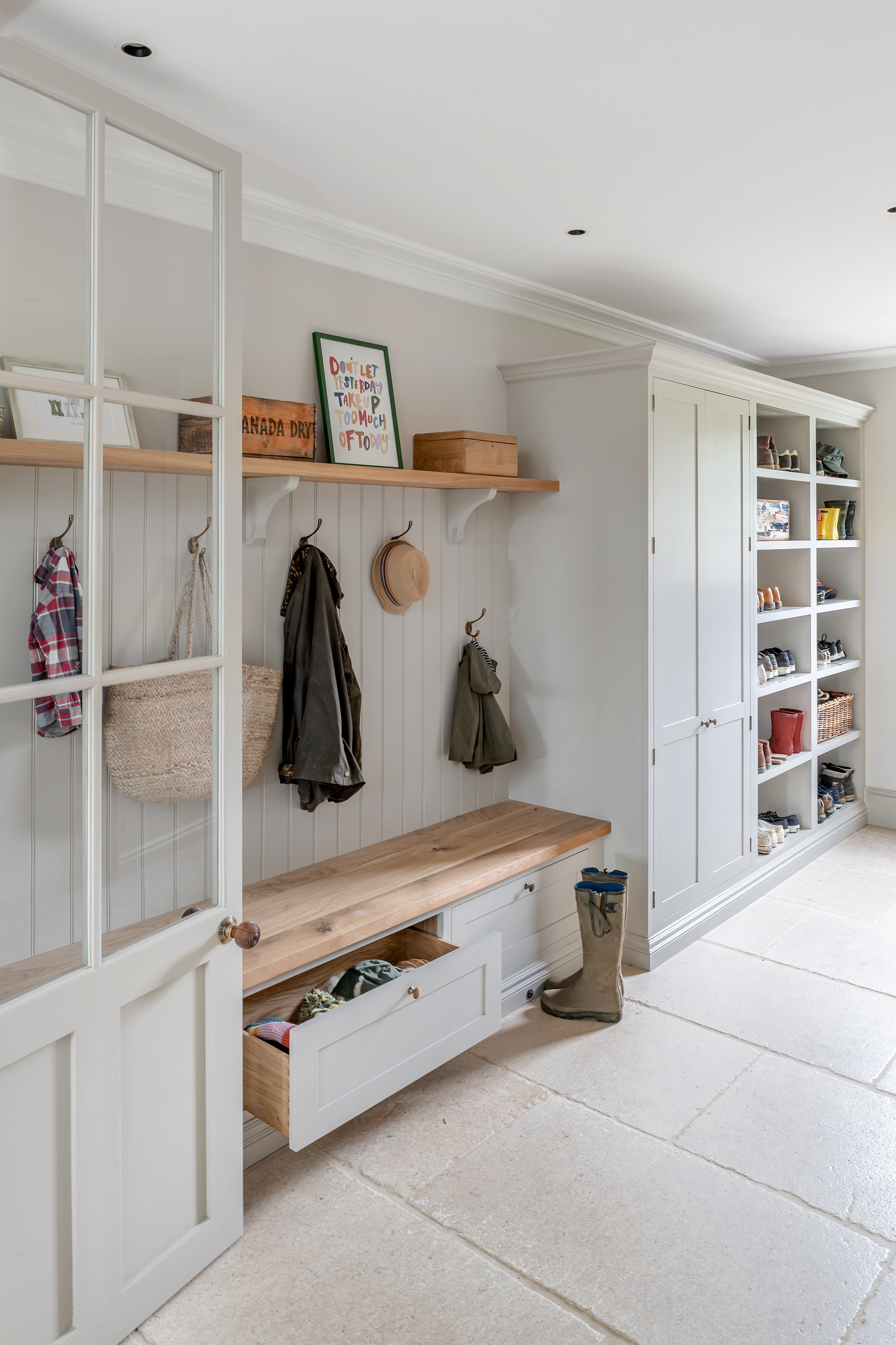
'Clutter can often contribute to an unpleasant smell. A well-organized mudroom is essential. Built-in mudroom storage solutions like cubbies, lockers, or wall-mounted hooks help keep things tidy. Each item has a designated spot, reducing the chance of damp, forgotten items lurking in corners and causing unpleasant odors', says Artem Kropovinsky.
If you're wondering why your house smells musty, often the answer, especially in the case of mudrooms, can be that the smell is emanating from wooden drawers and cupboards. You can use an equal mix of water and vinegar to wipe down your wooden furniture. After letting it air dry, you should notice the bad odors have gone.
Alternatively, you can use use scented cedar-lined hang ups (at Amazon) to prevent mustiness and contribute a pleasant aroma to your mudroom.
Another way to embed nice smells to your mudroom us by lining your drawers or closets with paper that you spray with essential oils and warm water. This will mask any odors that remain, and add a nice scent to them. Be sure to avoid oils such as vanilla and cinnamon which may stain your clothes. You can find Fresh Linen Drawer Liners at Amazon.
4. DIY nice scents
Part of the fun of thinking of ways to make a mudroom smell nice is finding DIY methods of creating personalized smells. Anything from pot pourri bowls, diffusers, to candles can all be made to your personal scent preferences.
Miguel Camperos, VP of Operations at ethical gardening firm SunVara says, 'You may not readily associate mudrooms with nice smells, but even this utilitarian space can be fresh and pleasantly scented with the right tools. Placing an open container filled with a mixture of water, essential oils, and vodka is an ideal way to reduce odors and add a subtle fragrance to your space.'
You can make your own reed diffuser using bamboo skewers and almond or jojoba oil in a glass bottle. You can also make candles, and add whatever scent you want with a few drops of some essential oils.
We recommend using these Essential Oils-Perfect for Diffuser, Humidifier, Candle Making, from Amazon. This Cliganic Organic Jojoba Oil from Amazon can be used for your reed diffuser.
5. Keep a mudroom well ventilated

Keeping good air circulation is a very effective way to neutralize any bad smells in your mudroom. This includes occasionally keeping windows or a door open, or using a fan or AC system.
If you have a ventilation system, be sure to maintain and clean it to prevent dust, dirt and mold from circulating, which will be counter-productive.
Artem Kropovinsky says, 'A mudroom that smells nice is usually well-ventilated. The space feels refreshing because it breathes, circulates air well and often incorporates air cleaning indoor plants. Philodendrons or peace lilies are great choices not just for their aesthetic appeal, but also for their air-cleaning qualities.'
6. Display air freshening plants and herbs
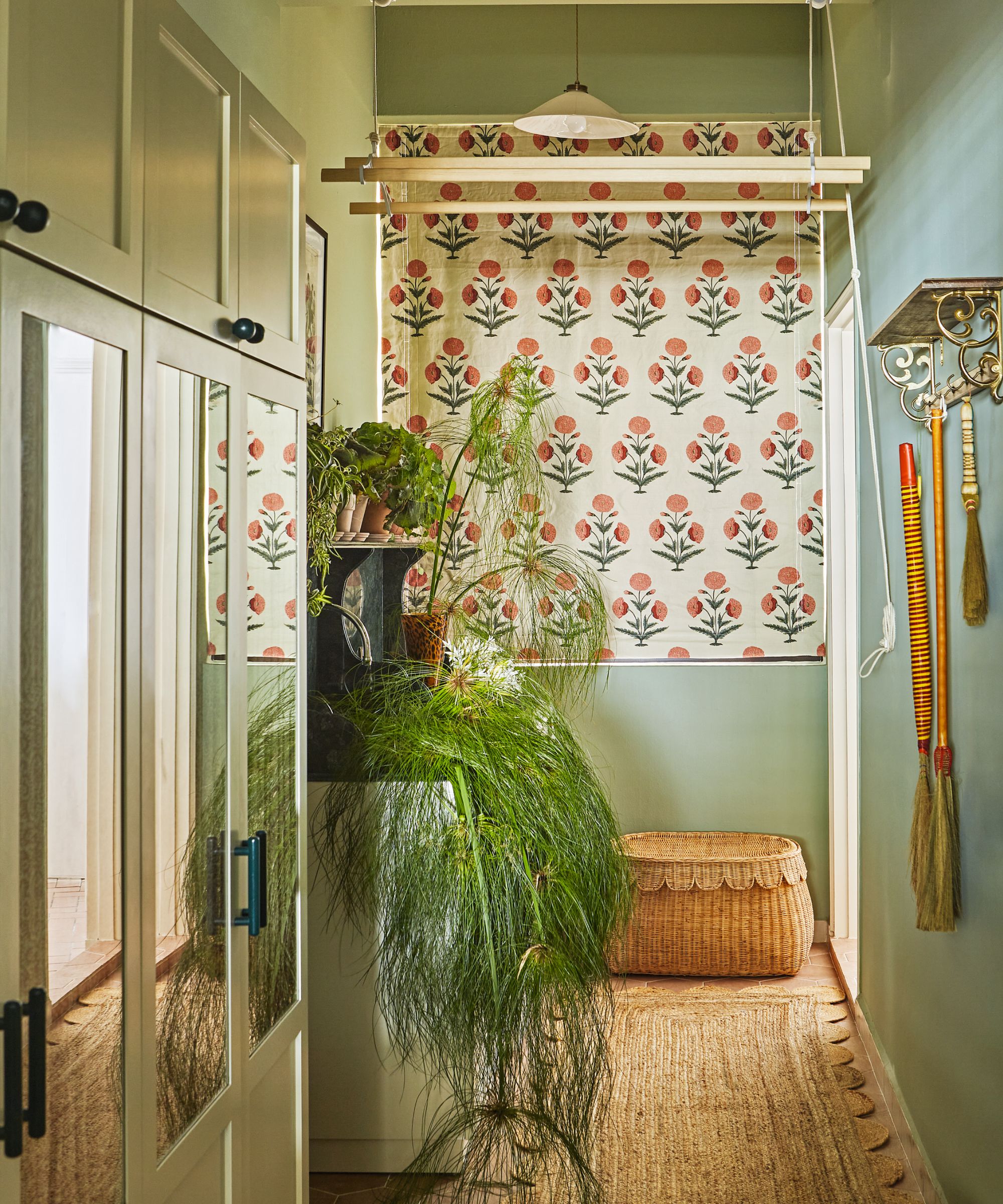
Introducing greenery to your mudroom is not only aesthetically pleasing, but it can also be a great way to remove odors and add nice, natural smells.
'Incorporate natural air purifiers like indoor plants or activated charcoal
in the mudroom. These can help absorb odors and improve air quality', says Muffetta Krueger, Cleaning Expert and Founder of Muffetta's Domestic Assistants.
In addition to air purifying plants such as peace lilies, chrysanthemums, spider plants, why not put some potted aromatic herbs on the windowsill to enhance the smell of your mudroom?
7. Choose the right materials for your mudroom
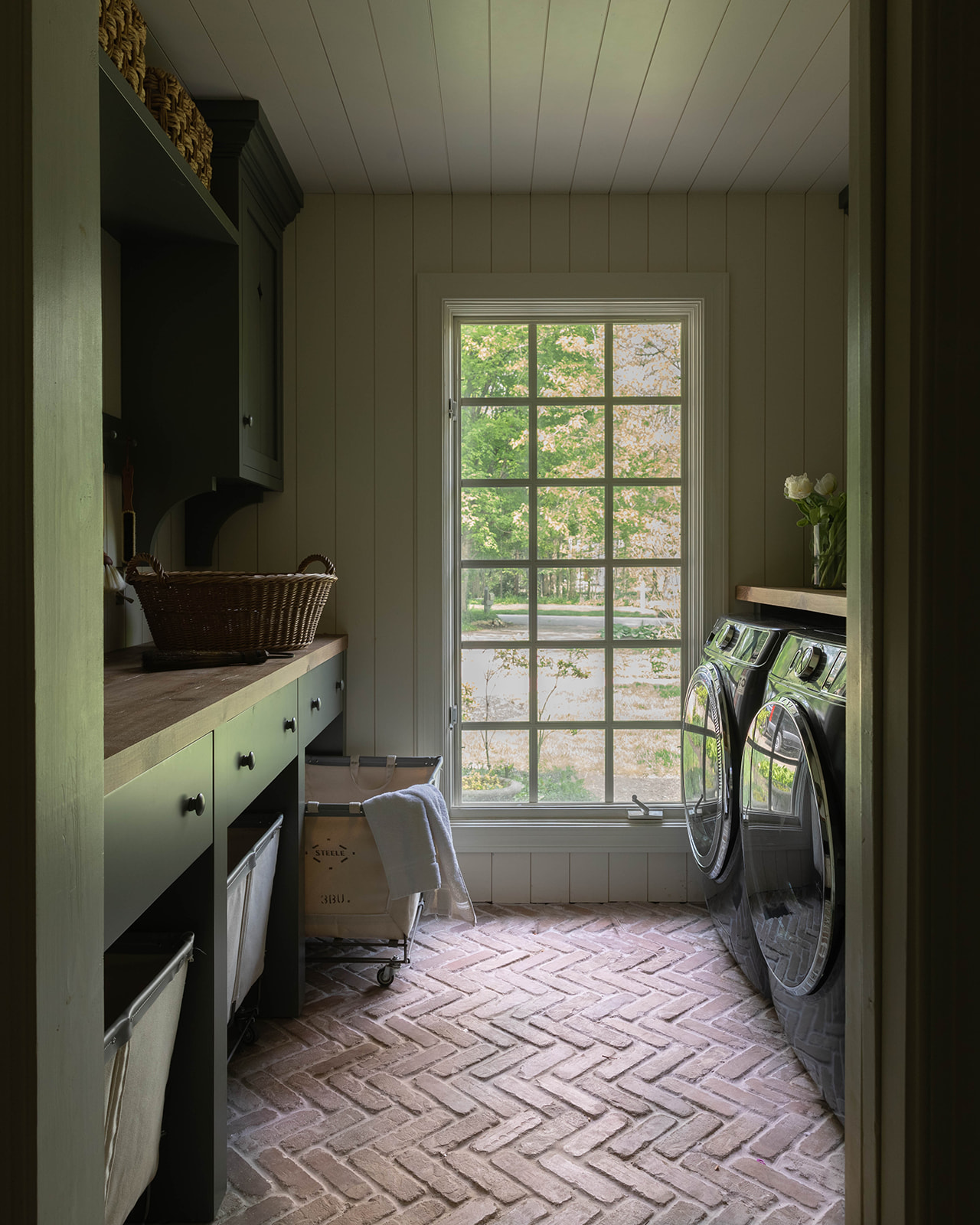
'The choice of materials for a mudroom is paramount. Those with fragrant mudrooms choose materials that are easy to clean and do not retain odors. Mudroom tile or stone flooring, for instance, is preferable over carpeting. The wall finishes too, need to be chosen such that they resist moisture and odor absorption', recommends Artem Kropovinsky.
Muffetta Krueger advises, 'Use washable rugs and doormats to catch dirt and moisture at the entrance. Regularly wash these mats to prevent them from becoming a source of bad odors.'
8. Clean pet areas
'If you have pets, install pet gates near the entrances to limit mess while still allowing them to enjoy the outdoors. Wipe off their paws and fur before they come inside', suggests James King at Deluxe Maid.
Make sure to regularly wash any pet beds, blankets, toys and collars, and wipe areas where they eat on a daily basis.
FAQs
What's one of the leading causes of bad smells in mudrooms?
Moisture is one of the main sources of smells in mudrooms, especially if you live in a rainy area, moisture is likely to regularly build up from wet clothes, shoes, bad circulation, doormats, drying washing, and so on. This can lead to the development of mold and mildew if you're not careful, so make sure to ventilate the room properly and wipe down walls and surfaces.
Crafting a nice-smelling mudroom involves more than just cleaning; a combination of ventilation, clever storage solutions and plants that can also contribute to the décor are all instrumental.
We'll leave you with this last tip: If your mudroom is used as a laundry room, using fabric softener's scent will make the room smell nicer with very low effort from you.







